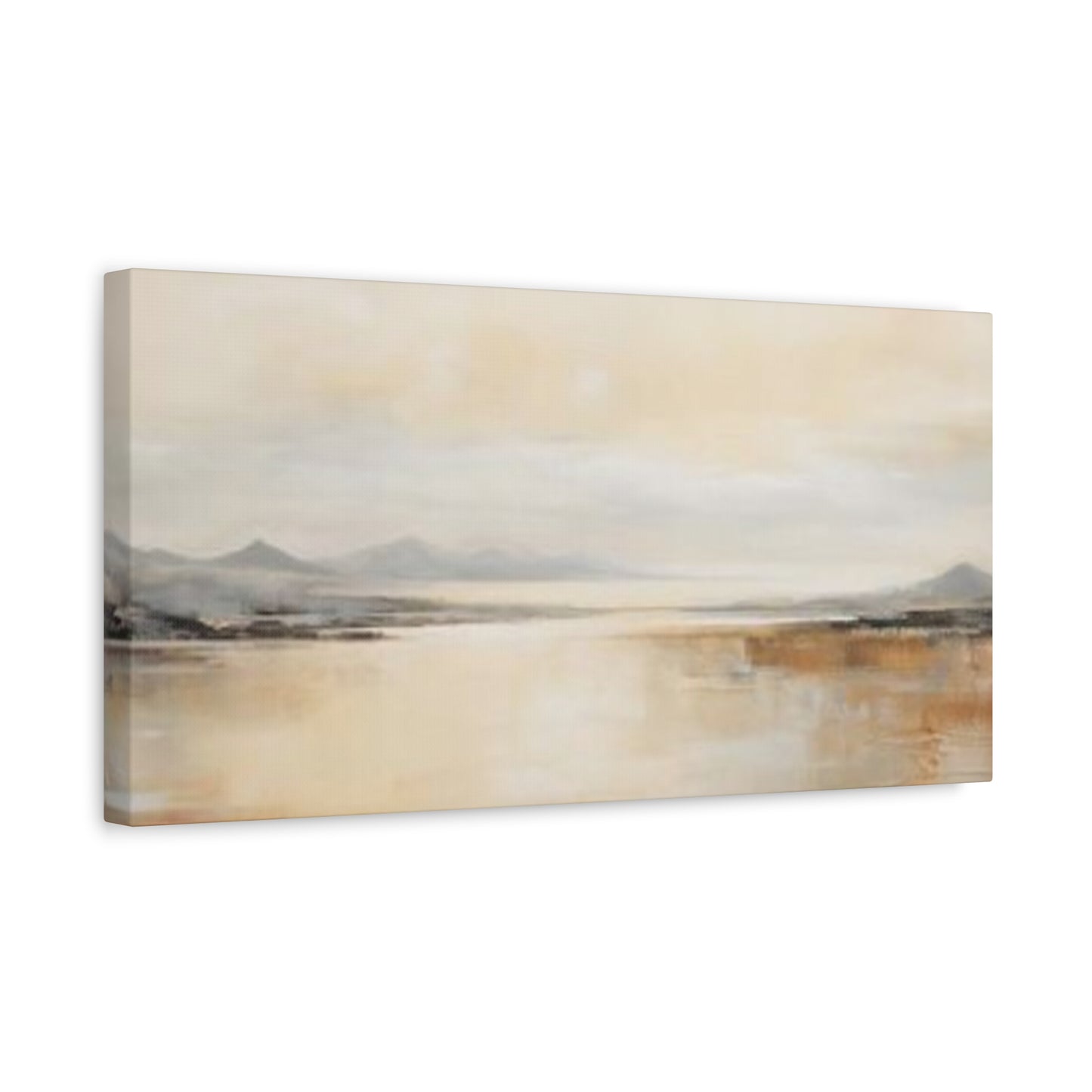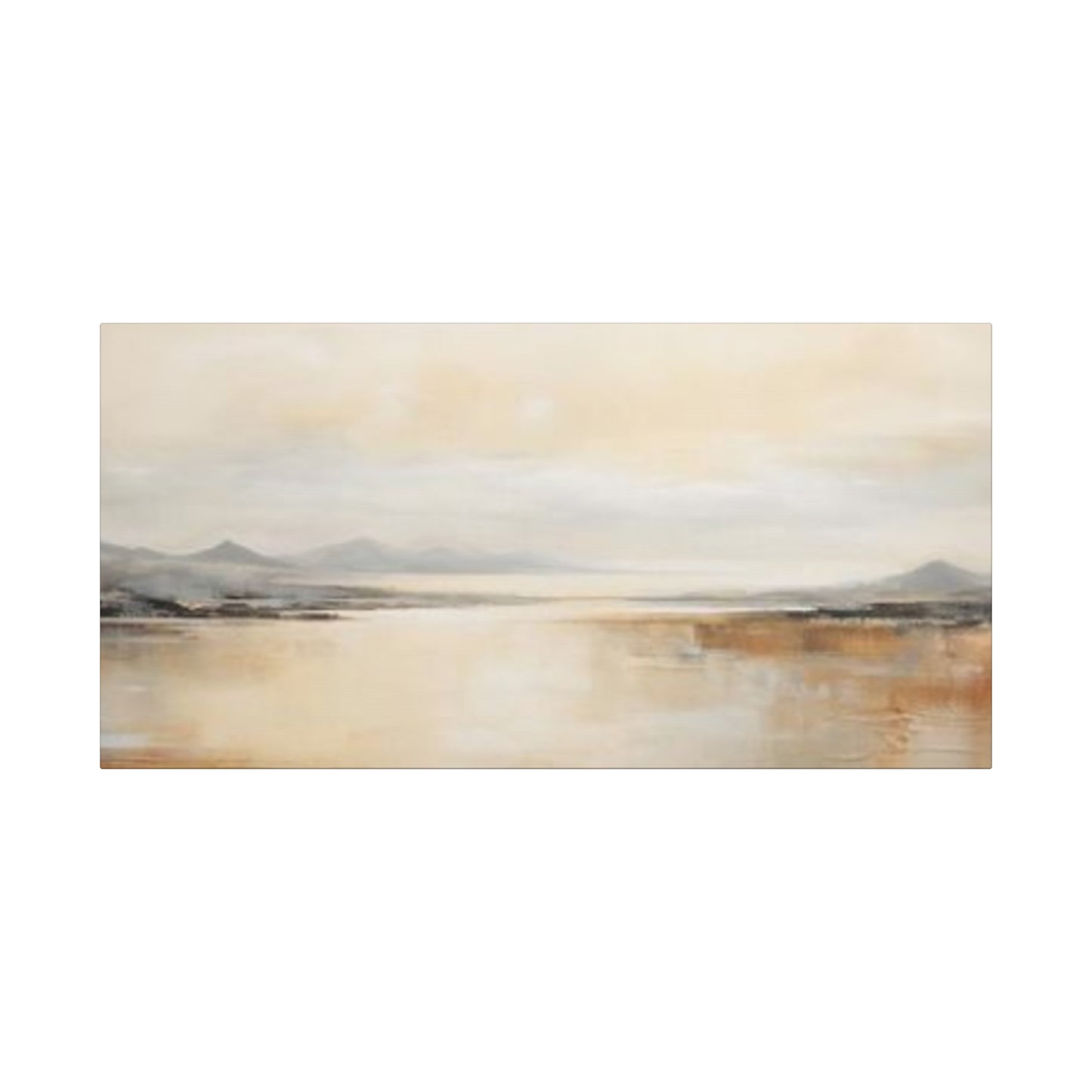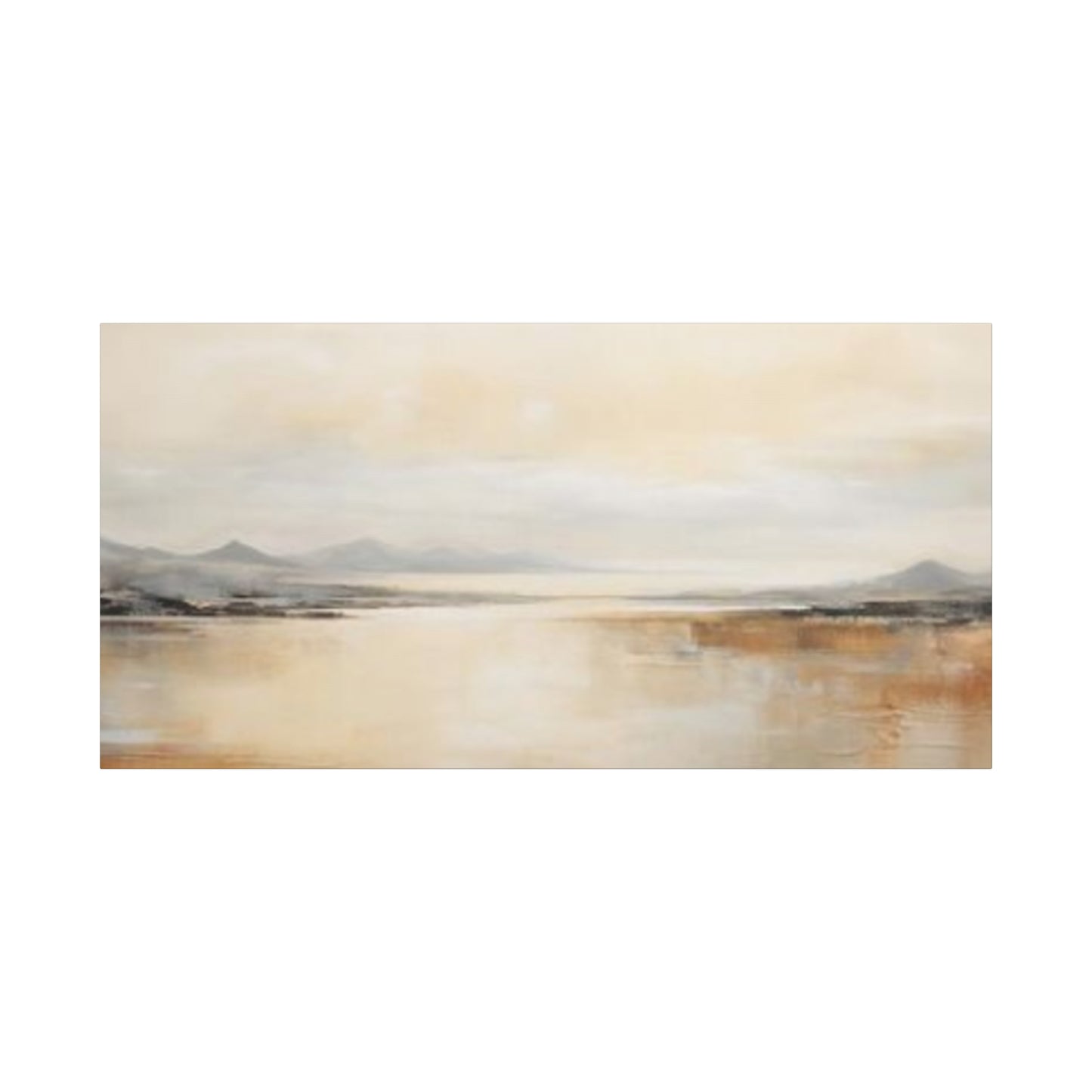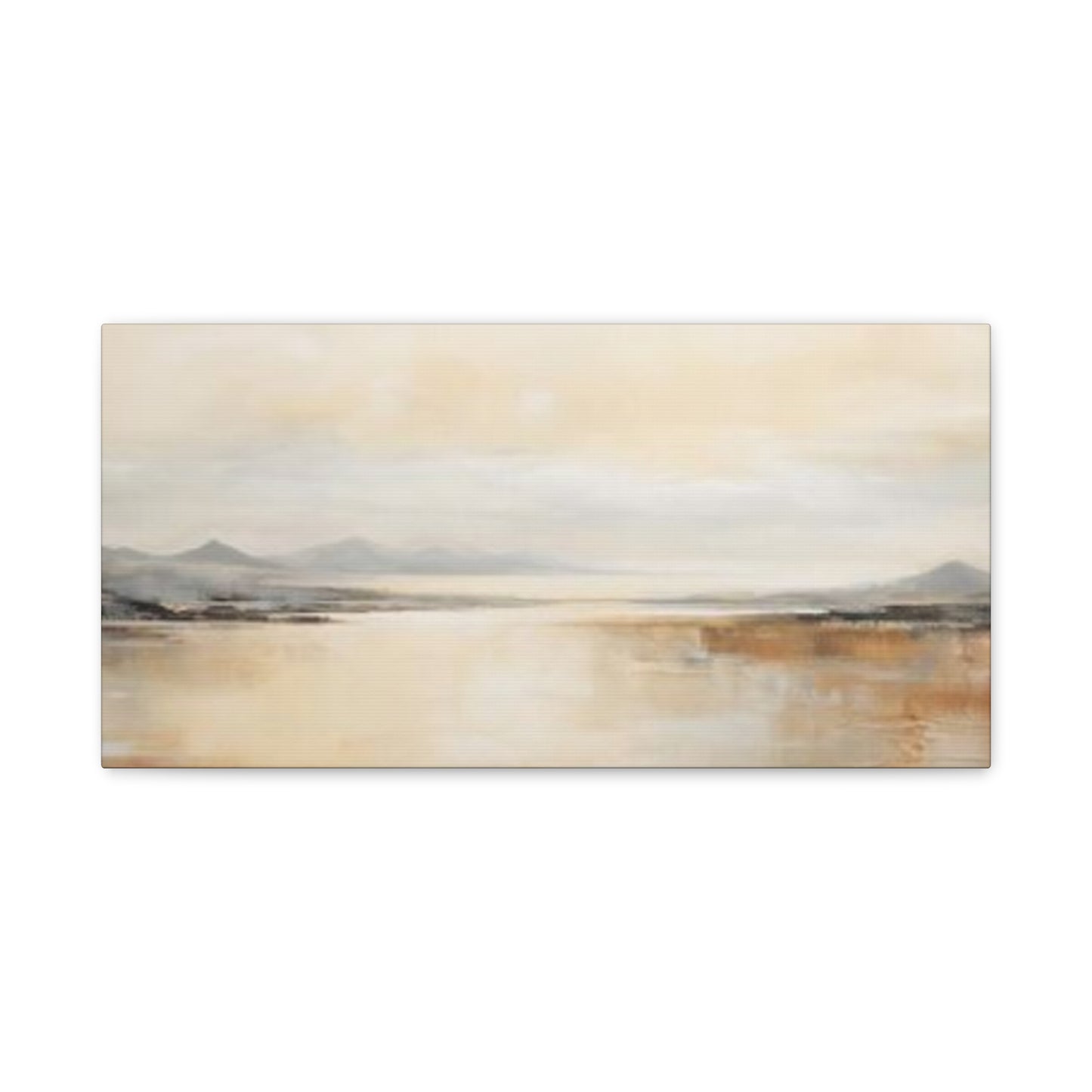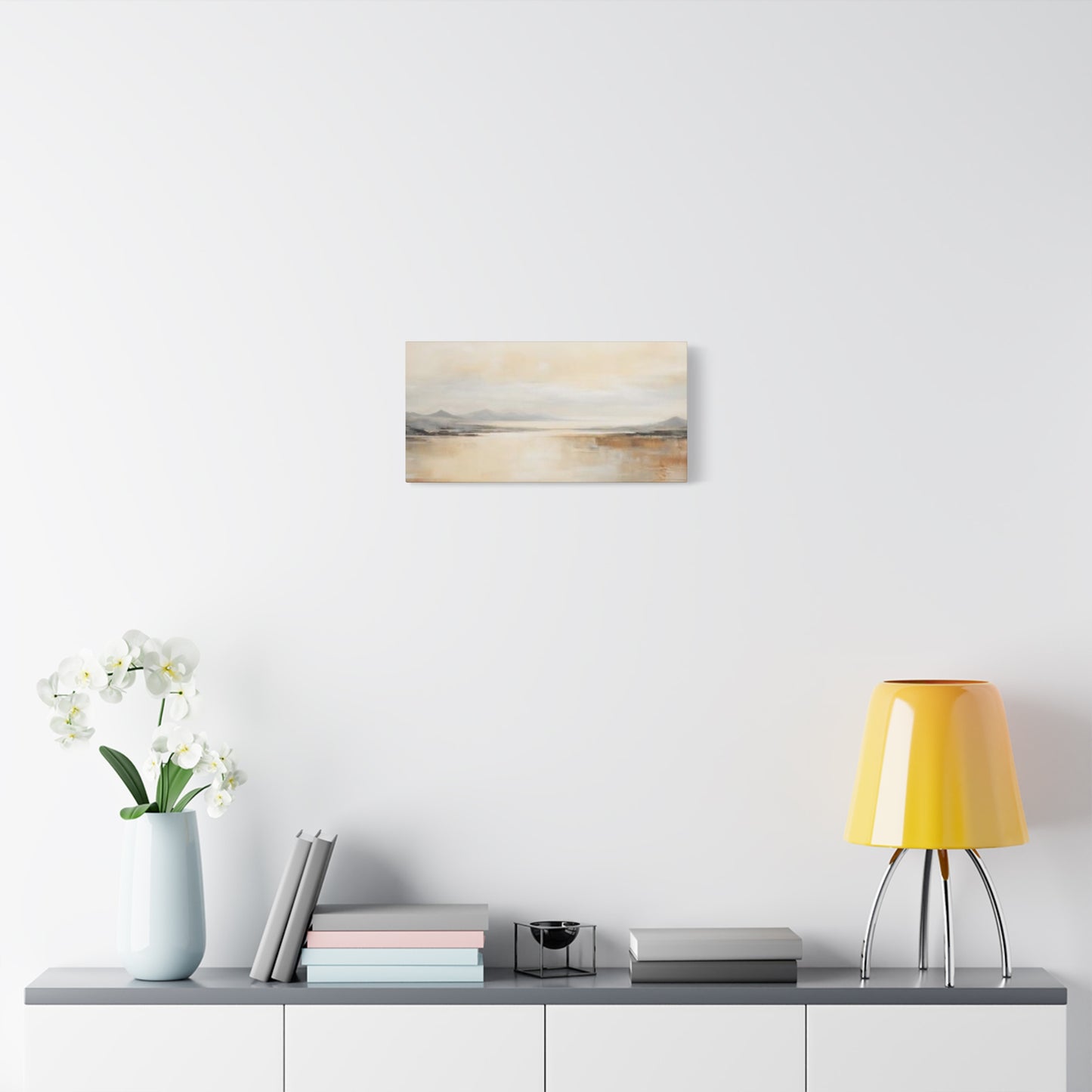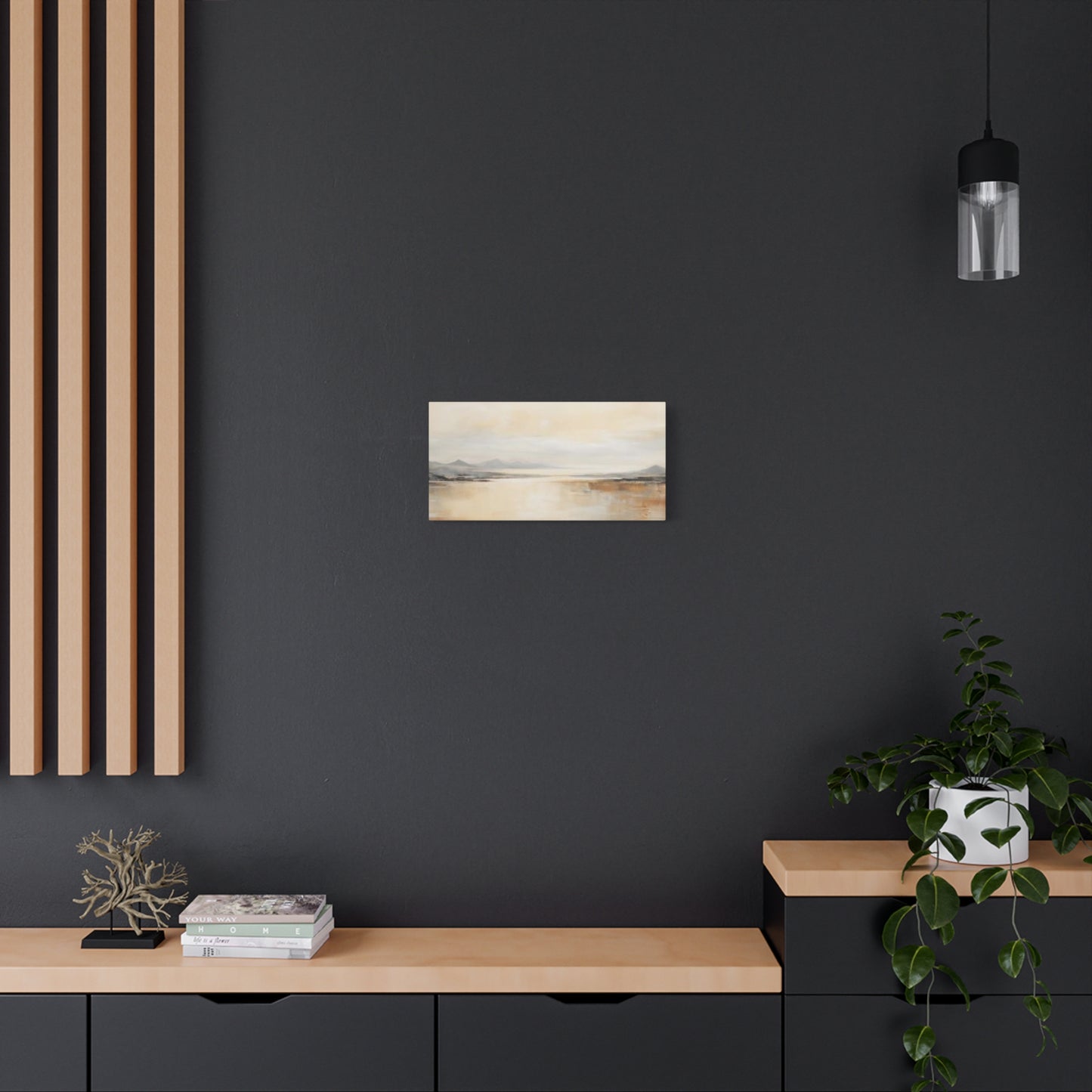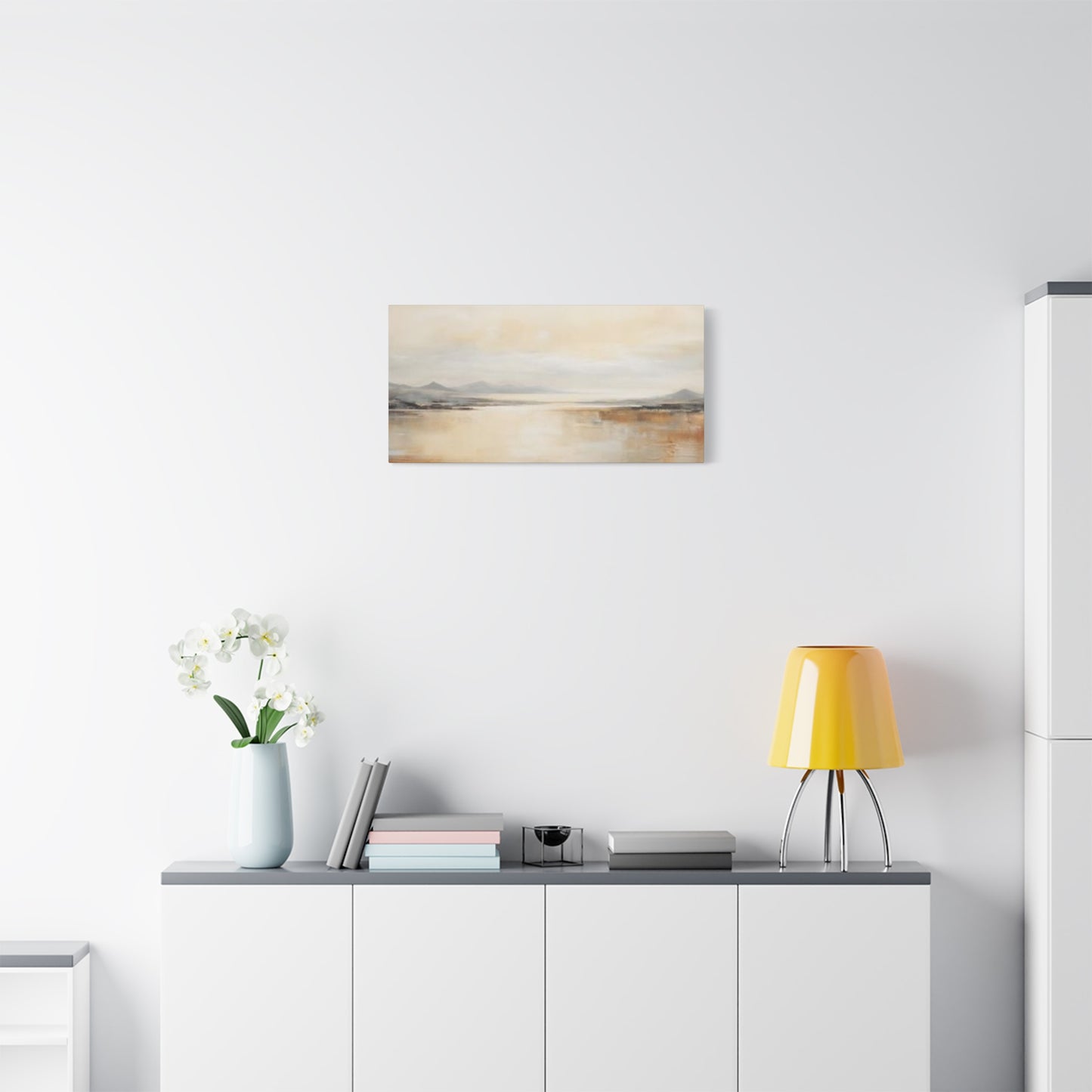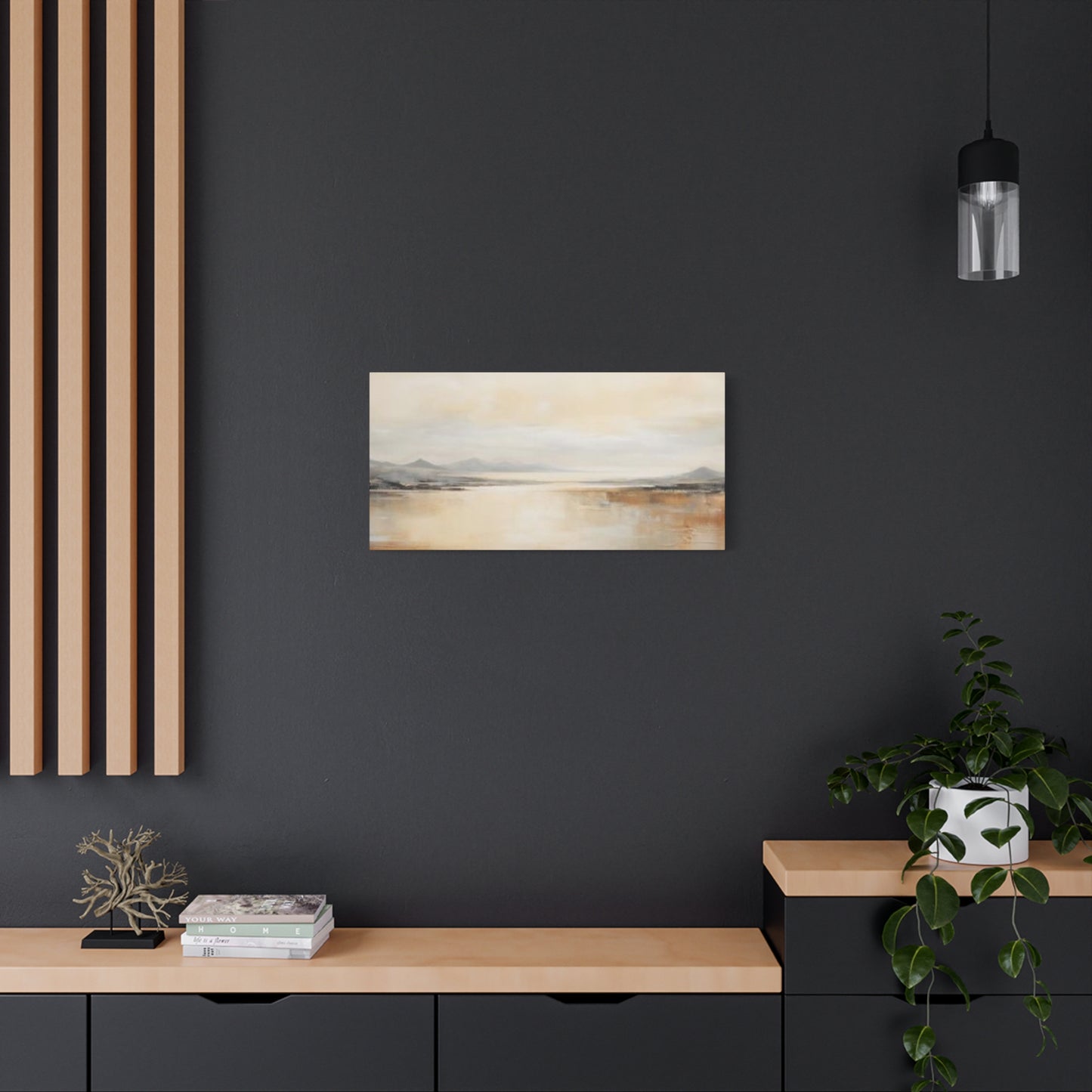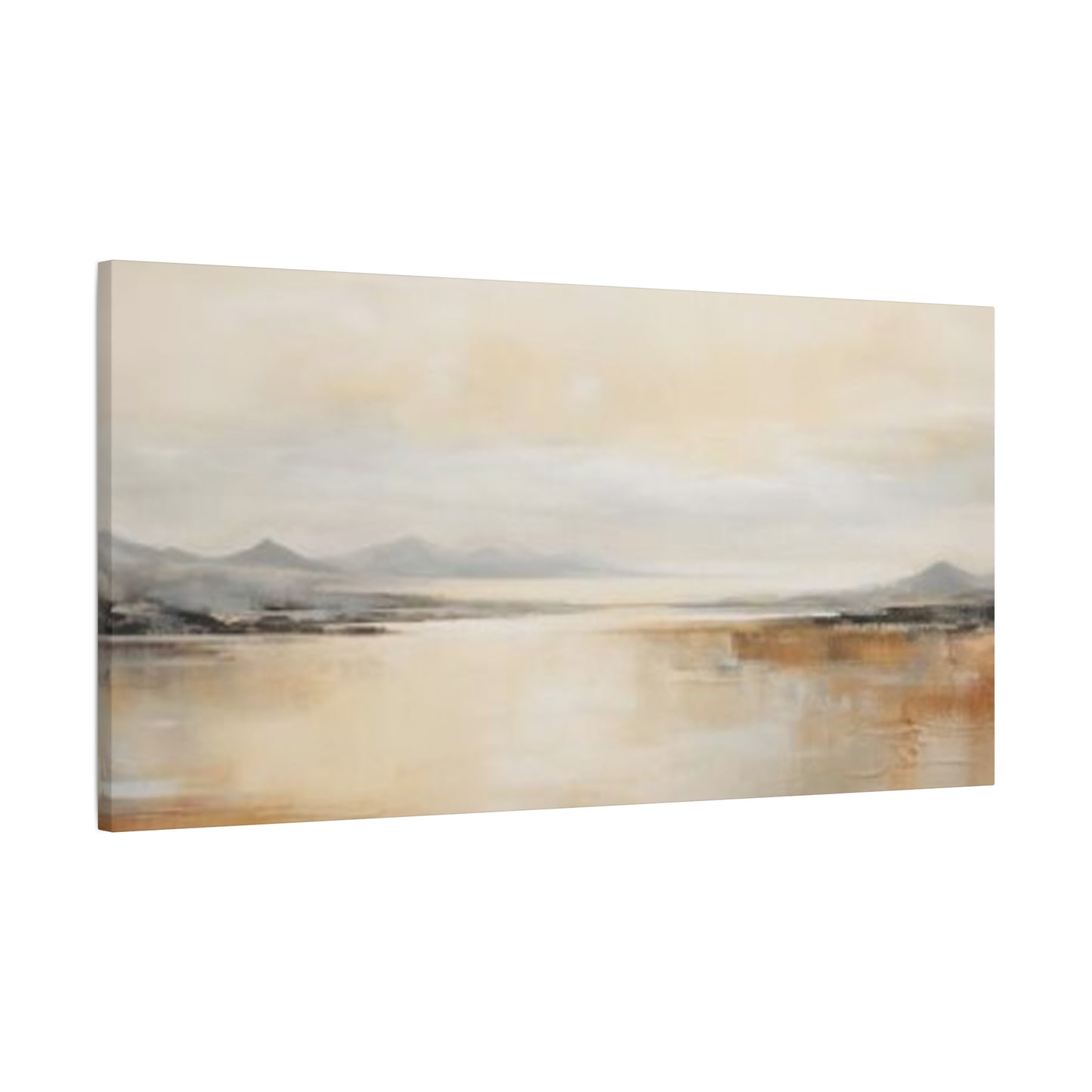Tranquil Beauty of Wide Mountain Lake Panoramas: Perfect Wall Art for Peaceful Spaces
The allure of expansive natural vistas captured in photographic and artistic form has become increasingly prevalent in contemporary interior design. Vast aquatic landscapes surrounded by towering peaks offer a unique combination of tranquility and grandeur that resonates deeply with those seeking to bring the essence of wilderness into their living and working environments. These panoramic representations serve multiple purposes beyond mere decoration, functioning as windows to distant realms and powerful tools for creating atmosphere within enclosed spaces.
The practice of adorning walls with nature-inspired imagery dates back centuries, though modern reproduction techniques have made high-quality representations more accessible than ever before. When considering pieces that showcase broad horizontal compositions featuring water bodies nestled among elevated terrain, several factors come into play regarding selection, placement, and the overall impact these pieces can have on a room's character and the psychological state of its inhabitants.
The Captivating Power of Horizontal Landscape Compositions
Horizontal compositions inherently draw the eye across their expanse, creating a sense of movement and flow that vertical arrangements cannot replicate. When these compositions capture water bodies surrounded by mountainous terrain, they tap into fundamental human responses to natural environments. Our species evolved in landscapes where water and shelter were essential survival elements, and representations of these features continue to trigger deep-seated positive responses.
The width-to-height ratio in panoramic formats typically ranges from 2:1 to 3:1 or even more extreme proportions, creating what photographers and artists call ultra-wide compositions. This format closely mimics human binocular vision, which naturally perceives the world in a horizontal orientation. When viewing such images, observers experience a subtle cognitive recognition that feels more natural than square or vertical formats, leading to extended viewing times and deeper engagement with the artwork.
Water features in these compositions serve as anchoring elements that provide visual rest points amid more complex mountainous backgrounds. The reflective qualities of lake surfaces create natural symmetry, doubling the visual impact of surrounding peaks and skies. This reflection phenomenon adds depth and dimension to two-dimensional representations, creating an almost three-dimensional quality that draws viewers into the scene.
Mountain ranges in the background provide vertical counterpoints to horizontal water expanses, creating dynamic tension that keeps compositions visually interesting. The interplay between these elements generates natural leading lines that guide viewer attention through the entire composition, encouraging complete visual exploration rather than fixation on a single point.
Creating Atmospheric Depth in Interior Environments
The installation of broad landscape imagery fundamentally alters room perception by introducing visual depth where physical walls create boundaries. This illusion of extended space proves particularly valuable in urban dwellings where actual windows may offer limited or unappealing views. By providing an alternative visual terminus, these pieces effectively expand perceived room dimensions without requiring structural modifications.
Color palettes derived from natural water and mountain scenes tend toward blues, greens, and earth tones that research consistently identifies as psychologically calming. These hues reduce perceived room temperature, making spaces feel cooler even without adjusting actual climate control systems. This subtle environmental modification can contribute to energy savings while improving comfort levels for occupants.
The presence of natural imagery has been extensively studied in healthcare, educational, and workplace settings, with findings consistently demonstrating reduced stress markers, improved focus, and enhanced overall satisfaction among individuals exposed to nature representations. While not equivalent to actual nature exposure, quality reproductions trigger similar neurological responses, releasing neurotransmitters associated with relaxation and contentment.
Lighting considerations become particularly important when installing these pieces, as improper illumination can create glare on protective glazing or wash out subtle tonal variations in prints. Natural lighting works best for viewing, though artificial lighting should be carefully positioned to graze across the surface at angles that minimize reflection while highlighting textural elements in the reproduction medium.
Material Selection and Production Methods
Contemporary reproduction technologies offer unprecedented fidelity in capturing and reproducing natural scenes. Traditional photographic printing on paper remains popular, though modern archival papers resist fading far longer than historical materials. Chemical stability in inks and substrates now allows properly displayed pieces to maintain color accuracy for decades or even centuries under appropriate conditions.
Canvas printing has gained substantial popularity due to its ability to add textural dimension that mimics original paintings. The fabric weave creates subtle surface variation that reduces glare while adding visual interest when viewed from different angles. Gallery-wrapped canvas, where the image extends around frame edges, creates a more contemporary presentation that eliminates visible borders, allowing the image to appear to float on the wall.
Metal printing represents newer technology that infuses dyes directly into specially coated aluminum panels. This process creates luminous images with exceptional color depth and contrast ratios that surpass paper-based methods. The rigid substrate requires no additional framing, and the non-porous surface resists environmental damage, making metal prints suitable for high-humidity environments where paper would deteriorate.
Acrylic face-mounting involves bonding prints to transparent acrylic panels, creating depth and protecting the image surface. Light passes through the acrylic before reflecting off the print, creating exceptional color saturation and perceived depth. This premium presentation method suits contemporary interiors where clean, minimalist aesthetics predominate.
Wood printing offers organic texture that complements rustic or natural interior themes. Images are transferred directly onto planks, allowing wood grain to show through and become part of the composition. This integration of natural material with natural imagery creates coherent presentations that appeal to those seeking authentic, earthy aesthetics.
Compositional Elements That Define Quality Imagery
Superior landscape photography demonstrating broad horizontal perspectives requires specific technical expertise and often involves challenging shooting conditions. Photographers seeking these scenes frequently venture into remote locations during optimal lighting conditions, which typically occur during brief windows around sunrise and sunset when light quality reaches its peak.
Foreground elements provide visual entry points that lead viewers into compositions. Rocky shorelines, vegetation, or architectural elements placed in lower portions of frames create layering that enhances three-dimensional perception. These elements also provide scale references that help viewers comprehend the actual magnitude of distant mountains, which can appear diminished without contextual comparison objects.
Midground water bodies serve as transitional zones between immediate foreground details and distant mountain ranges. The treatment of this area determines overall composition balance, with calm waters creating serene, meditative moods while wind-disturbed surfaces introduce energy and movement. Shoreline contours guide visual flow, with curved lines creating gentle, relaxing compositions while angular formations generate dynamic tension.
Background mountain ranges provide compositional culmination, often occupying the upper third of panoramic frames. Atmospheric perspective causes distant peaks to appear lighter and less distinct than foreground elements, creating natural depth cues that our visual system interprets as distance. Photographers may enhance this effect through filtration or post-processing, though excessive manipulation can create unnatural appearances that reduce image credibility.
Sky treatment significantly impacts overall mood and visual weight distribution within compositions. Dramatic cloud formations add visual interest to otherwise empty upper portions, while clear skies create minimalist aesthetics that emphasize mountain forms. Sunrise and sunset skies introduce warm color notes that complement cooler water and mountain tones, creating balanced color harmony.
Creating Gallery Walls with Multiple Panoramic Pieces
Multiple panoramic pieces can be combined into gallery arrangements that create more complex visual narratives than single images. Successful multi-piece installations require careful planning regarding spacing, alignment, and thematic coherence.
Horizontal stacking places multiple panoramic pieces vertically aligned with consistent spacing between them. This arrangement suits tall walls where single panoramic pieces would leave excessive empty space above and below. Three to five pieces of identical dimensions create formal, organized presentations, while varying widths introduce casual, organic feels.
Triptych arrangements divide single panoramic scenes across three separate panels with small gaps between them. This classical presentation format adds contemporary appeal through modern printing technologies that allow seamless scene continuation across gaps. The segmentation adds visual interest while maintaining compositional unity, and the technique allows installation of very wide images that would be impractical as single pieces.
Offset arrangements position panoramic pieces at different heights rather than aligning them horizontally or vertically. This approach creates dynamic, asymmetrical compositions that feel more energetic than rigidly aligned alternatives. Careful planning ensures overall balance despite intentional irregularity, with visual weight distribution considered across the entire arrangement rather than within individual pieces.
Corner wrapping extends panoramic themes across perpendicular walls meeting at corners, creating immersive environments that surround viewers with natural imagery. This technique requires careful image selection to ensure scenes make logical sense when viewed as continuous environments, and mounting must account for the angle change where walls meet.
Mixed format combinations integrate panoramic pieces with square or vertical formats showing complementary scenes. This approach allows telling more complete visual stories by including detail images alongside broader establishing shots. Maintaining thematic and color coherence across different formats prevents arrangements from appearing haphazard or disconnected.
Seasonal Variation in Mountain Lake Imagery
Seasonal conditions dramatically affect the appearance of mountain and lake environments, with each season offering distinct visual characteristics and emotional associations. Understanding seasonal variations helps in selecting imagery that resonates with personal preferences or serves specific design intentions.
Spring imagery captures renewal and awakening, with melting snow feeding streams and waterfalls while new vegetation emerges in warmer lower elevations. Waters often carry slight turbidity from sediment stirred by increased flow, creating subtle color variations from crystalline blue toward green or gray. Skies frequently feature dramatic cloud formations as weather patterns transition from winter to summer, adding visual complexity to compositions.
Summer scenes show mountain lakes at their calmest and most accessible, with high elevation snowmelt creating maximum water levels and vegetation reaching peak development. Clear skies predominate in many mountain regions during summer, creating simplified compositions that emphasize pure form and color. Extended daylight hours allow photography during golden hours when sun angles remain relatively high, creating different shadow patterns than other seasons.
Autumn imagery offers spectacular color displays as deciduous vegetation transitions before winter dormancy. The contrast between colorful lower elevation forests and snow-dusted peaks creates visual interest across vertical planes within compositions. Lower sun angles characteristic of autumn create more dramatic lighting effects with longer shadows that emphasize topographic relief.
Winter scenes present minimalist aesthetics with reduced color palettes dominated by white, blue, and gray. Frozen lake surfaces create unique visual opportunities, with ice patterns, windswept snow formations, and sometimes remarkably clear ice allowing views into depths below. The stark beauty of winter mountain environments appeals to those seeking clean, uncluttered visual experiences that complement contemporary minimalist interiors.
Geographic Regions Famous for Alpine Lake Landscapes
Certain regions worldwide have become renowned for producing iconic mountain lake imagery that appears repeatedly in quality art collections. These locations offer particularly photogenic combinations of topography, water clarity, and atmospheric conditions that create consistently stunning visual opportunities.
The Rocky Mountain regions of western North America stretch from Alaska through Canada and into the United States, featuring numerous pristine mountain lakes surrounded by dramatic peaks. Iconic locations produce imagery recognizable worldwide, with crystal-clear waters often displaying remarkable turquoise coloration caused by glacial flour, finely ground rock particles suspended in water that scatter light in specific wavelengths.
Alpine regions of Europe have inspired artists for centuries, with mountain lakes nestled among peaks offering timeless beauty that appears both wild and somehow civilized due to centuries of human presence. The accessibility of many locations in this region has made them extensively photographed, creating familiar scenes that nonetheless retain their power to captivate viewers.
Scandinavian fjord regions present unique combinations of deep water bodies carved by ancient glaciers, surrounded by steep mountain walls that rise directly from water surfaces. The dramatic vertical relief and often moody atmospheric conditions create imagery with powerful emotional impact, appealing to those seeking more intense aesthetic experiences than gentler landscapes provide.
New Zealand's Southern Alps contain numerous mountain lakes in relatively remote settings, offering pristine scenes that appear untouched by human development. The Southern Hemisphere location creates lighting conditions and seasonal timing opposite to northern regions, providing visual novelty for viewers accustomed to more common northern imagery.
Himalayan regions contain high-altitude lakes surrounded by the world's tallest peaks, creating scale relationships that inspire awe. The extreme elevations create atmospheric effects and lighting conditions rarely seen elsewhere, producing imagery with unique qualities that distinguish these scenes from lower-elevation mountain lakes.
Patagonian regions of South America feature dramatic mountain and lake combinations with distinctive granite peak formations. The region's position in southern latitudes creates lighting conditions and weather patterns that produce highly dynamic imagery with frequently dramatic skies and weather effects.
Photographic Techniques for Capturing Sweeping Vistas
Creating quality panoramic landscape imagery requires specific technical approaches that differ from standard photography. Understanding these techniques helps in appreciating the skill required to produce the images that ultimately appear in interior spaces.
Wide-angle lenses capture broader fields of view than standard focal lengths, allowing photographers to include more scene elements within single frames. However, extreme wide-angle lenses introduce geometric distortion that can appear unnatural, particularly near frame edges. Skilled photographers either embrace this distortion as artistic effect or carefully manage compositions to minimize noticeable distortion.
Panoramic stitching involves capturing multiple overlapping images that software later combines into single ultra-wide compositions. This technique avoids the distortion issues of extreme wide-angle lenses while creating incredibly detailed final images with resolution exceeding what single captures can achieve. Proper execution requires careful attention to maintaining consistent exposure across all component images and using tripods to ensure precise alignment.
Graduated neutral density filters allow proper exposure of scenes containing extreme brightness ranges, such as bright skies above darker terrestrial elements. These filters block light in portions of the frame, typically the upper section, allowing photographers to properly expose both bright and dark areas simultaneously without creating unnatural-looking images through excessive post-processing.
Long exposure techniques transform water surfaces from textured, detailed elements into smooth, ethereal forms by allowing movement to blur during extended shutter opening times. This creative approach creates dreamy, otherworldly aesthetics that appeal to certain artistic sensibilities, though purists prefer crisp, detailed water surfaces showing natural texture.
Focus stacking combines multiple images captured at different focus distances, creating final images with complete front-to-back sharpness impossible to achieve in single captures due to depth of field limitations. This advanced technique creates hyper-real imagery showing detail clarity throughout compositions that exceeds what human vision perceives in real-world viewing.
The Role of Scale in Creating Visual Impact
Size relationships between artwork and viewing spaces significantly influence aesthetic impact and viewer experience. Understanding scale dynamics helps in selecting appropriately sized pieces that achieve desired effects.
Monumental scale creates immediate visual dominance, with large pieces commanding attention and establishing themselves as primary focal points within spaces. In large rooms with high ceilings, appropriately scaled artwork prevents walls from feeling bare or incomplete. The immersive quality of large panoramic images creates presence that approaches actual window views, generating psychological responses more intense than smaller pieces trigger.
Human scale pieces, roughly three to five feet wide, feel approachable and intimate while still providing substantial visual presence. These dimensions work well in medium-sized rooms where larger pieces would overwhelm while smaller pieces would disappear. Human scale artwork invites closer inspection and creates more personal connections than monumental pieces that maintain viewers at respectful distances.
Intimate scale pieces, under three feet wide, serve different purposes than larger works, providing visual interest in smaller spaces or functioning as supporting elements in gallery walls surrounding larger central pieces. These smaller works allow collecting multiple pieces without overwhelming single walls, and their modest dimensions suit personal spaces like bedrooms or studies where large-scale artwork might feel intrusive.
Viewing distance correlates directly with appropriate scale, with pieces meant for viewing from across large rooms requiring greater dimensions than works positioned in spaces where viewers will typically stand much closer. A piece visible from a living room seating area fifteen feet away requires different scale considerations than artwork positioned in a breakfast nook where viewers sit within five feet.
Ceiling height constraints limit practical artwork dimensions, as pieces approaching ceiling height can feel cramped and create visual tension rather than harmony. General guidelines suggest leaving at least 12-18 inches between artwork tops and ceilings to maintain appropriate breathing room, though higher ceilings allow proportionally larger clearances that maintain balanced relationships.
Digital Display Options and Considerations
Digital display technology offers alternatives to traditional static artwork, allowing rotation through multiple images and potentially displaying animated content. These options appeal to those seeking variety or who struggle with commitment to single images.
Digital photo frames have evolved significantly from early low-resolution versions, with current models offering screen resolutions and color accuracy approaching quality print reproductions. Larger format digital displays designed specifically for artwork presentation can now display panoramic compositions with impressive quality, though costs significantly exceed traditional printing for comparable sizes.
The ability to rotate through multiple images prevents visual habituation, that gradual decline in engagement that occurs with extended exposure to unchanging stimuli. Fresh images periodically catch attention and rekindle interest, providing variety impossible with static pieces. Collections can be curated for seasonal rotation, matching imagery to outdoor conditions, or organized around themes that change based on personal preferences.
Power requirements and visible screens when deactivated represent practical considerations that distinguish digital displays from traditional artwork. Screens consume electricity continuously and generate heat that affects room comfort and energy costs. When not displaying images, dark screens create black rectangles on walls that may not suit all interior aesthetics, unlike traditional artwork that maintains consistent appearance.
Image quality considerations require attention to source material resolution, as low-resolution images display poorly on high-resolution screens. Panoramic formats demand particularly high resolution due to their wide dimensions, with quality display requiring source files with pixel dimensions measuring in the tens of thousands horizontally.
Dynamic content possibilities extend beyond simple static image display, with some users creating subtle animations like slowly moving clouds or gently rippling water. These animations can enhance engagement and interest, though excessive movement may become distracting in spaces dedicated to concentration or relaxation.
Color Coordination with Existing Interior Elements
Successfully integrating artwork into established interiors requires attention to color relationships between new pieces and existing furnishings, finishes, and decorative elements.
Complementary color schemes use colors opposite each other on color wheels, creating high-contrast, energetic combinations. Mountain lake imagery dominated by blues pairs naturally with warm orange or yellow accent elements in furnishings or accessories. These combinations feel vibrant and dynamic, though excessive contrast can become visually fatiguing if not balanced with neutral elements.
Analogous color schemes employ adjacent color wheel positions, creating harmonious, low-contrast combinations that feel cohesive and restrained. Blue-dominated imagery coordinates naturally with green or purple elements in interiors, creating smooth transitions between elements rather than dramatic contrasts. These schemes suit spaces dedicated to relaxation where calm, unified aesthetics are desired.
Monochromatic approaches use single color families in varying saturations and values, creating sophisticated, unified presentations. Selecting mountain lake imagery with limited color ranges that match dominant interior colors creates seamless integration where artwork feels intrinsic to overall design concepts rather than added afterthoughts.
Neutral base strategies employ mostly neutral furnishings and finishes, allowing colorful artwork to provide primary color interest. This approach offers maximum flexibility, as artwork can be changed without requiring broader interior updates. Mountain lake imagery provides consistent color themes while offering virtually unlimited variety within those themes.
Accent color matching identifies specific colors within artwork to repeat in carefully selected accessories, textiles, or smaller furnishings. This technique creates visual connections that tie artwork into broader design schemes. Selecting throw pillows, vases, or other accessories that echo specific water tones or sky colors creates intentional cohesion that elevates overall design sophistication.
Psychological Territoriality and Personal Space Claims
Artwork serves roles beyond pure aesthetics, functioning as territorial markers that help individuals establish psychological ownership over spaces, particularly in shared or public environments.
In workplace settings, personalizing cubicles or offices with chosen imagery establishes individual identity within institutional settings that might otherwise feel anonymous. Nature imagery particularly appeals for workplace personalization, as few would object to universally appealing natural scenes, unlike potentially controversial or disturbing alternative imagery.
Residential shared spaces like living rooms display artwork that represents household identity and values to visitors while providing daily reminders of chosen ideals to residents. Selecting prominent nature imagery communicates environmental appreciation and perhaps adventurous spirits that value wild places. These subtle communications shape how others perceive residents while reinforcing self-concepts.
Vacation home decor often features imagery from surrounding regions, connecting interior spaces with outdoor environments guests came to experience. Mountain lake imagery in mountain vacation properties creates thematic consistency while providing visual enjoyment during inclement weather when outdoor activities become impossible or unpleasant.
Guest room artwork requires different considerations than personal space decor, as these rooms accommodate diverse individuals with varying preferences. Natural imagery provides safe, broadly appealing options unlikely to clash with any guest's sensibilities, creating welcoming environments without imposing strong personal statements that might alienate some visitors.
Transition space decoration in hallways and entryways uses artwork to create positive first impressions while transforming potentially dead space into engaging environments. Panoramic formats particularly suit elongated hallway dimensions, with nature imagery creating welcoming, calming first experiences upon entering homes.
Investment Potential and Collectibility Factors
While most nature photography is purchased primarily for aesthetic enjoyment, certain pieces may appreciate in value over time based on various factors that distinguish exceptional work from merely competent imagery.
Photographer reputation significantly influences value, with established artists commanding premium prices that lesser-known photographers cannot match regardless of technical quality. Building collections from emerging photographers whose work shows exceptional quality may offer opportunities to acquire pieces that appreciate as artists gain recognition, though predicting which photographers will achieve lasting fame remains challenging.
Limited edition status restricts availability, potentially increasing demand relative to supply and driving prices upward over time. Numbered editions signed by photographers verify authenticity and confirm position within limited production runs. Small edition sizes, typically under 100 prints, create greater scarcity than larger editions numbering in the hundreds or thousands.
Print quality and materials affect longevity and therefore long-term value retention. Museum-quality archival materials and printing processes ensure pieces remain visually stable for centuries under proper care, while economy materials and processes produce work that deteriorates within decades. Investment-grade work requires premium materials and techniques that significantly increase production costs but protect long-term value.
Iconic location recognition adds value to imagery showing famous, widely recognized locations that hold cultural significance. While ubiquitous imagery of extremely famous locations becomes clichéd, skilled photographers find fresh perspectives on known subjects that honor recognition value while offering new visual experiences.
Historic significance attaches to imagery documenting locations or conditions before significant changes occurred. Early photography of now-developed areas or images showing glaciers before climate-driven retreat document specific moments in time that cannot be recreated, adding documentary value beyond pure aesthetics.
Creating Thematic Collections Across Multiple Rooms
Developing coherent themes across multiple interior spaces creates visual narratives and sophisticated design unity that elevates overall aesthetic impact beyond what disconnected individual pieces achieve.
Regional themes focus collections on specific geographic areas, with all pieces showing locations within defined regions. A Rocky Mountain theme, for instance, might include imagery from locations across several states or provinces while maintaining geographic coherence. This approach suits those with strong personal connections to specific regions through residence, heritage, or meaningful experiences.
Seasonal progression themes distribute imagery reflecting different seasons across various rooms, creating subtle narratives about annual cycles and temporal change. Spring imagery in home offices might represent new beginnings and productivity, while autumn scenes in libraries could reflect harvest, completion, and preparation for quiet winter months ahead.
Activity-based themes match imagery to room functions, with energetic mountain adventure scenes in exercise areas and tranquil calm water images in bedrooms. This approach uses artwork to reinforce intended room uses and activities, supporting desired psychological states appropriate to different spaces.
Color progression themes organize imagery based on dominant colors, creating gradual transitions as one moves through homes. Cool blues in northern rooms transitioning to warmer tones in southern rooms can complement natural lighting variations these orientations receive, creating intuitive color experiences that feel natural rather than arbitrary.
Time of day themes feature dawn imagery in eastern rooms receiving morning light, midday scenes in central spaces, and sunset imagery in western rooms catching evening illumination. This approach creates poetic connections between actual lighting conditions in rooms and depicted lighting in imagery.
Spiritual and Contemplative Dimensions of Natural Imagery
Many individuals experience natural landscapes in quasi-spiritual terms, finding in wild places opportunities for reflection, perspective, and connection with realities beyond daily human concerns
Retry
M
Continue
Spiritual and Contemplative Dimensions of Natural Imagery
Many individuals experience natural landscapes in quasi-spiritual terms, finding in wild places opportunities for reflection, perspective, and connection with realities beyond daily human concerns. Representations of these environments within living spaces can facilitate similar contemplative experiences, creating sanctuaries for thought and renewal within domestic settings.
The concept of the sublime, extensively explored by philosophers and aestheticians, describes emotional responses to natural phenomena that exceed ordinary experience. Mountain ranges towering above reflective waters generate feelings of smallness and humility that paradoxically prove uplifting rather than diminishing. This encounter with vastness provides perspective on personal concerns, revealing them as temporary and manageable within broader contexts.
Meditation practices often incorporate visual focal points that anchor wandering attention. Calm water surfaces extending toward distant peaks provide ideal subjects for visual meditation, offering simple forms that don't demand active interpretation yet contain sufficient interest to maintain engagement. The horizontal orientation naturally draws eyes across expanses, encouraging the lateral eye movements associated with relaxed, diffuse attention rather than the fixed staring that creates tension.
Religious and philosophical traditions across cultures recognize mountains and waters as powerful symbols carrying deep spiritual significance. Mountains represent permanence, strength, and transcendence, their peaks reaching toward heavens while bases remain grounded in earth. Waters symbolize purification, life, and constant change despite apparent stillness. Together, these elements create complete symbolic systems reflecting fundamental life paradoxes between permanence and change, stillness and movement, earth and sky.
Contemplative viewing differs from casual appreciation, involving sustained attention that reveals details and subtleties overlooked in brief encounters. Quality imagery rewards this deeper engagement, containing compositional sophistication and tonal complexity that unfold gradually rather than delivering all impact immediately. Creating spaces conducive to contemplative viewing requires careful attention to seating positions, lighting quality, and freedom from distraction.
Daily ritual incorporation transforms artwork from static decoration into active elements of spiritual or psychological practice. Beginning or ending days with brief periods of contemplative viewing establishes routines that support mental health and emotional stability. The consistency of unchanging imagery provides reliability and comfort, creating stable elements amid life's inevitable turbulence.
Environmental Conservation and Consciousness Raising
Photography showcasing pristine natural environments serves advocacy functions beyond pure aesthetics, raising awareness about threatened landscapes and potentially inspiring conservation support among viewers who might never personally visit depicted locations.
The conservation photography movement explicitly aims to protect threatened environments through imagery that communicates beauty and fragility. Photographers working in this tradition often partner with environmental organizations, donating portions of sales to conservation efforts or creating work specifically intended to support particular preservation campaigns. Purchasing such work allows art collectors to contribute directly to environmental protection while acquiring aesthetically valuable pieces.
Awareness creation occurs when viewers develop emotional connections to places they've never visited through powerful imagery that makes abstract environmental concerns concrete and personal. Seeing specific lakes and mountains threatened by development or climate change transforms distant problems into immediate concerns warranting attention and action. This consciousness-raising function justifies nature photography as something beyond mere decoration, elevating it to socially significant cultural work.
Educational opportunities arise when high-quality nature imagery prompts curiosity about depicted locations, ecosystems, or geological processes. Parents use artwork to introduce children to natural wonders, sparking interests that may develop into lifelong passions for environmental science or outdoor recreation. Adults similarly discover unfamiliar regions or natural phenomena through artwork, expanding geographic knowledge and environmental understanding.
Climate change documentation represents increasingly important photographic work as rapidly changing conditions alter familiar landscapes within observable timeframes. Glacial retreat imagery powerfully communicates climate impacts through visual evidence that transcends political rhetoric and scientific abstraction. Historical comparison photographs showing dramatic changes over decades create undeniable records of environmental transformation.
Endangered ecosystem representation brings attention to threatened habitats and species facing extinction. Boreal forest lakes, alpine meadows, and other specialized environments supporting unique biodiversity face multiple threats from development, pollution, and climate disruption. Beautiful imagery celebrating these places while they remain relatively intact creates cultural records and potentially galvanizes protection efforts.
Commercial and Hospitality Applications
Businesses incorporate nature imagery strategically to influence customer psychology, create brand associations, and enhance commercial environments in ways that increase satisfaction and potentially improve financial performance.
Healthcare facilities extensively use nature imagery based on research demonstrating measurable patient benefits including reduced pain medication requirements, shorter recovery times, and improved satisfaction scores. Waiting areas, patient rooms, and treatment spaces all benefit from carefully selected natural scenes that reduce anxiety and promote calmness. Panoramic mountain lake views create particularly effective installations in these settings due to their inherently calming qualities.
Hotel and resort properties use local landscape imagery to celebrate regional character while helping guests connect with destinations. Mountain resort hotels prominently feature local peak and lake imagery throughout public spaces and guest rooms, immersing visitors in regional identity from arrival through departure. This environmental storytelling enhances guest experiences while differentiating properties from generic chain hotels lacking place-specific character.
Corporate office environments deploy nature imagery to improve employee wellbeing and productivity in settings where actual views may be absent or unappealing. Conference rooms, collaborative spaces, and individual offices all benefit from natural scenes that provide brief mental restoration opportunities during demanding workdays. Forward-thinking employers recognize that environmental quality directly impacts workforce performance and retention.
Restaurant and hospitality venues create ambiance through artwork that supports intended dining experiences. Mountain lodge restaurants naturally feature alpine imagery that reinforces rustic, outdoor-oriented identities. Even urban restaurants incorporate nature scenes to provide visual escape from surrounding city environments, creating oases of tranquility that enhance dining experiences.
Retail environments use nature imagery to slow customer movement and encourage browsing rather than rushed shopping. The calming influence of natural scenes reduces stress associated with purchasing decisions while creating pleasant environments that customers want to linger in, increasing time spent in stores and potentially boosting sales.
Spa and wellness facilities depend heavily on environmental quality to deliver promised relaxation and rejuvenation experiences. Nature imagery forms essential components of these carefully constructed environments, with water and mountain scenes particularly appropriate for treatment rooms where clients seek escape from daily stresses.
Regional Climate Considerations for Displayed Imagery
The environments where artwork hangs influence both practical preservation concerns and psychological appropriateness of selected imagery based on relationships between depicted and actual climates.
Humid climates pose challenges for artwork preservation, with moisture promoting mold growth, paper deterioration, and adhesive failure in mounted prints. Metal and properly sealed acrylic presentations resist humidity better than paper-based materials, making them preferable in coastal regions, tropical climates, or any location where humidity control proves difficult. Despite these challenges, water and mountain imagery feels particularly appropriate in humid regions where actual water abundance creates affinity for aquatic themes.
Arid climates present opposite concerns, with extremely low humidity causing embrittlement and static electricity problems in paper-based artwork. Humidification systems protect both artwork and human comfort in desert regions. Psychologically, water imagery in arid climates provides visual relief from dry surroundings, functioning as aspirational representations of abundant water that residents may crave consciously or unconsciously.
Extreme temperature environments, whether hot or cold, require careful climate control to protect artwork from thermal stress. Vacation properties in mountain regions may experience temperature extremes when unoccupied, potentially damaging artwork if heating and cooling systems are completely shut down. Minimum climate control maintaining moderate conditions protects artwork investments even in unoccupied periods.
Coastal salt air accelerates corrosion of metal components in frames and hanging hardware while also potentially affecting print materials. Stainless steel or other corrosion-resistant materials prevent degradation in these challenging environments. The irony of coastal locations requiring extra protection for water-themed imagery highlights the distinction between depicted and actual environmental conditions.
High altitude locations experience increased ultraviolet radiation due to thinner atmospheric filtering, accelerating light-induced fading of displayed artwork. UV-filtering glazing or positioning away from direct sunlight becomes particularly important in mountain regions where the depicted scenes may exist outside windows while reproductions grace interior walls.
Photographic Ethics and Indigenous Considerations
Creating and displaying landscape imagery raises ethical questions regarding indigenous land rights, sacred site respect, and the colonial history of landscape photography that often ignored or erased native peoples from their ancestral territories.
Sacred site photography requires cultural sensitivity, as many natural features hold spiritual significance to indigenous peoples who may prefer these places remain private or at least not be commercialized through tourism and imagery sales. Photographers increasingly consult with tribal authorities before publishing imagery from culturally sensitive locations, respecting wishes regarding appropriate representation.
Indigenous presence and absence in landscape photography reflects historical patterns where native peoples were systematically excluded from images of territories they had inhabited for millennia. Contemporary photographers face choices about whether to continue this erasure tradition or acknowledge indigenous relationships with depicted lands. Acknowledgments in titles or descriptions represent one approach, as does actively collaborating with indigenous photographers and artists.
Commercial exploitation concerns arise when non-native photographers profit from imagery showing indigenous territories without providing benefits to native communities. Some photographers address this through revenue sharing, donations to indigenous organizations, or collaborative projects that employ native community members. These approaches attempt to redress historical patterns while creating more equitable contemporary practices.
Access and overcrowding issues develop when popular imagery draws excessive visitors to fragile or culturally sensitive locations. The "Instagram effect" of viral landscape photography has damaged numerous locations as unprepared visitors flood sites seeking to recreate famous images. Responsible photographers increasingly question whether sharing location information serves environmental or cultural conservation interests.
Cultural appropriation in imagery titling or description can occur when photographers incorrectly use indigenous place names or misrepresent cultural significance of depicted locations. Accurate research and consultation with knowledgeable sources prevent embarrassing errors while demonstrating respect for indigenous knowledge systems and naming traditions.
Addressing Common Display Challenges and Solutions
Practical obstacles frequently complicate artwork display, requiring creative solutions that balance aesthetic ideals with physical constraints and other considerations.
Awkward wall dimensions, such as narrow spaces between windows or above furniture, limit display options for standard format artwork but often suit panoramic pieces perfectly. Transforming challenging spaces into display opportunities requires measuring carefully and potentially commissioning custom-sized work that precisely fits available dimensions. This tailored approach creates intentional presentations rather than obviously compromised placements.
Structural limitations including wiring, plumbing, or HVAC components hidden within walls can prevent driving fasteners in desired locations. Stud finders locate safe fastening points, though these may not align with ideal positioning. Alternative mounting systems like track-based approaches or tall easel-style floor stands circumvent wall-mounting challenges while offering positioning flexibility.
Rental property restrictions often prohibit or severely limit wall penetrations, complicating traditional hanging methods. Damage-free hanging systems using adhesive strips or pressure-mounted hardware protect deposits while allowing personal space customization. Freestanding display options including easels or specialized furniture provide alternatives requiring no wall modification.
Existing artwork accommodation challenges arise when incorporating new pieces into established collections. Gallery wall approaches integrate multiple pieces of varying formats into cohesive arrangements that feel curated rather than haphazard. Planning arrangements on floors before wall installation prevents trial-and-error drilling that damages walls.
Ceiling height limitations in apartments or older homes with low ceilings restrict vertical dimensions of artwork that might otherwise suit spaces. Panoramic formats provide ideal solutions, offering substantial visual presence through horizontal extension while respecting ceiling clearance requirements. These formats prevent the cramped appearance taller pieces create in vertically constrained spaces.
Furniture placement conflicts occur when ideal artwork positions coincide with necessary furniture locations. Hanging artwork above furniture resolves many conflicts, though appropriate clearance must be maintained to prevent damage and allow furniture use. Alternatively, prioritizing artwork placement and arranging furniture around it demonstrates commitment to creating visually compelling environments.
Emerging Technologies in Image Capture and Display
Technological evolution continuously expands possibilities for creating and experiencing landscape imagery, with innovations affecting both photographic capture and display methods.
Drone photography enables perspectives impossible through ground-based photography, capturing elevated viewpoints that reveal landscape patterns and relationships invisible from traditional positions. Aerial perspectives show entire lake basins, mountain range extents, and landscape patterns that create striking compositions unavailable to earlier photographers. Accessibility of consumer drone technology has democratized aerial photography while also requiring responsible use respecting privacy, property rights, and aviation regulations.
Computational photography combines multiple exposures or applies algorithms that extract more information than single traditional exposures capture. High dynamic range imaging merges multiple exposures capturing different brightness levels, creating final images showing detail in both bright and dark areas simultaneously. Focus stacking sharpens entire compositions from front to back. These techniques create imagery that exceeds what human vision perceives in single moments while raising questions about photographic authenticity.
Virtual reality presentations offer immersive experiences placing viewers within three-dimensional environments rather than showing two-dimensional representations. While current adoption remains limited due to equipment requirements and content availability, VR technology promises revolutionary changes in how people experience remote locations without physical travel. The ultimate expression of experiential artwork may involve fully immersive virtual environments rather than wall-mounted images.
Augmented reality applications overlay digital information onto physical environments viewed through smartphones or specialized glasses. Artwork could incorporate AR elements that appear when viewed through devices, adding information layers, animations, or interactive elements to static base images. These hybrid experiences blend traditional and digital art forms in novel ways that may gain popularity as AR technology proliferates.
High dynamic range displays with increased brightness ranges and contrast ratios present images with remarkable luminosity and depth that standard displays cannot match. These screens better approximate the full dynamic range of actual scenes, creating more realistic and impactful presentations. As HDR technology becomes standard in consumer displays, digital artwork presentations will achieve new levels of visual impact.
Holographic displays creating three-dimensional floating images represent experimental technology that may eventually enable displaying landscapes with actual depth rather than implied depth in flat images. While current implementations remain crude and expensive, continued development may make holographic display practical for artwork presentation, revolutionizing how we experience reproduced imagery.
Creating Personal Connections Through Customized Commissions
While existing imagery suits most purposes, commissioned work tailored to individual preferences offers unique advantages including personal meaning and assured exclusivity.
Location specificity allows capturing places with personal significance that may not appear in commercial collections. Family property, wedding locations, favorite vacation destinations, or ancestral homelands can be professionally photographed and produced as artwork carrying meanings impossible in generic commercial images. This personalization transforms artwork from decoration into cherished possessions documenting important places and memories.
Seasonal timing control ensures capturing locations during preferred seasons or specific conditions rather than accepting whatever conditions existed when commercial photographers visited. Commissioning summer imagery of locations typically photographed in autumn, or vice versa, creates distinctive work standing apart from common representations. Similarly, specific weather conditions, lighting situations, or even celestial events can be targeted through planned commissioned shoots.
Compositional preferences regarding framing, perspective, and included elements can be specified when commissioning work rather than accepting photographers' choices in existing work. Particular foreground elements, specific peak inclusions, or preferred viewing angles transform generic locations into personalized visions reflecting individual aesthetic preferences.
Size optimization for specific display locations ensures perfect dimensional fit without compromise. Commercial work comes in standard dimensions that may not ideally fit available spaces, whereas commissioned pieces can be composed and produced in precise dimensions matching intended display locations. This optimization creates intentional, professional presentations rather than obviously adapted compromises.
Exclusive ownership provides certainty that selected images won't appear in neighbors' homes or numerous other locations. Limited edition and unique works carry prestige value beyond mass-produced reproductions, appealing to collectors who value exclusivity. While significantly more expensive than commercial reproductions, commissioned unique works offer distinctive ownership experiences.
Collaborative creative processes between commissioners and photographers can prove rewarding for both parties, with client vision and photographer expertise combining to create work neither would produce independently. This collaboration elevates transactions beyond simple commerce into creative partnerships yielding mutually satisfying results.
Addressing Overcrowding and Preservation of Photographic Locations
The accessibility of landscape photography through social media and online sharing has created unprecedented visitor pressure on scenic locations, raising urgent preservation questions.
Leave No Trace principles emphasize minimizing environmental impacts through careful behavior including staying on established trails, avoiding vegetation trampling, properly disposing of waste, and respecting wildlife. Photographers bear special responsibility for modeling appropriate behavior and avoiding damage while creating images that may inspire others to visit locations.
Seasonal visitation timing can reduce impacts by avoiding peak periods when locations experience maximum crowding. Visiting popular locations during off-peak seasons distributes visitor pressure more evenly across time while often providing superior photography conditions with fewer people interfering with compositions.
Alternative location exploration reduces pressure on famous, overcrowded sites by discovering and promoting lesser-known alternatives offering comparable beauty without crushing visitor numbers. Photographers who exclusively focus on famous locations contribute to overcrowding problems, while those actively seeking undiscovered places help distribute visitors more evenly.
Permit systems and capacity limitations at certain popular locations protect environments by restricting daily visitor numbers to sustainable levels. While potentially frustrating for those unable to secure permits, these systems prevent the wholesale destruction that occurs when fragile locations receive unlimited visitation. Photographers should respect and comply with permit requirements.
Infrastructure development including parking facilities, trails, and viewing platforms helps concentrate impacts in hardened areas rather than allowing uncontrolled dispersal across sensitive environments. While altering natural character, carefully designed infrastructure protects surrounding areas from far worse damage that unmanaged visitation creates.
Destination stewardship partnerships between photographers, land managers, and conservation organizations create collaborative approaches to sustainable visitation that balance access with protection. Photographers contribute by sharing information about sustainable practices while land managers gain insight into visitor motivations and behaviors. These partnerships create better outcomes than adversarial relationships.
Conclusion
The enduring appeal of expansive aquatic panoramas set among towering peaks reflects deep human connections to elements essential throughout our evolutionary history. These powerful natural scenes, when thoughtfully captured and skillfully reproduced, transcend mere decoration to become meaningful components of interior environments that influence mood, health, and wellbeing in measurable ways. The selection and display of such imagery involves far more than simple aesthetic preference, encompassing technical considerations regarding materials and reproduction methods, psychological factors affecting viewer responses, and practical matters including proper positioning, lighting, and preservation.
Contemporary technology has democratized access to high-quality nature imagery while simultaneously creating new challenges regarding authenticity, environmental impact, and artistic originality. The tension between sharing beautiful places and protecting them from overcrowding represents an ongoing ethical dilemma for photographers and those who display their work. Yet properly approached, landscape imagery serves valuable functions beyond individual enjoyment, including environmental education, conservation advocacy, and the maintenance of psychological connections to natural environments increasingly rare in urbanizing human populations.
The diversity of available formats, materials, and presentation methods ensures that virtually any interior space and design aesthetic can successfully incorporate panoramic mountain lake imagery. Whether through traditional framed prints, contemporary metal panels, gallery-wrapped canvas, or emerging digital display technologies, these compelling vistas bring the essence of wilderness into built environments where direct nature access remains limited or impossible. The investment in quality pieces, properly selected and professionally displayed, yields returns in daily satisfaction and long-term wellbeing that justify careful consideration of all factors influencing success.
Understanding the complex interplay between technical excellence in image capture, appropriate material selection for reproduction and display, sophisticated interior design integration, and personal psychological response enables making informed decisions that maximize the value and impact of these powerful visual elements. As environmental pressures intensify and urban populations grow, the role of quality nature imagery in maintaining human connections to the natural world becomes increasingly important, transforming what might seem like simple decoration into essential elements supporting psychological health and environmental consciousness.













